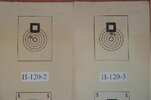Varminterror
Member
- Joined
- Jul 17, 2016
- Messages
- 14,935
I solved any concentricity issues at the press, which negated the need to check for it or worry about it.
Yep, use equipment that minimizes run out, then check to make sure it’s still good
This really outlines the difference between QC and QA which most folks really don't grasp. Using equipment and processes makes good ammo is Quality Control, which are Lead Measures we implement to do the things which make good ammo. Measuring ammo AFTER it has been made is Quality Assurance, a Lag Measures which determines the result of the process, but does not actually improve the process or product being made. As a production philosophy then, if we concentricity sort our ammo, we are wasting time making ammo which won't do what we need. Alternatively, using a concentricity tool to determine which dies or brass to use to make quality ammo makes sense, as we're setting up a Quality Control process of Lead Measures which make good ammo. Using a concentricity tool to sort and cull ammo might produce the same ultimate product quality, but it's less efficient because it has wasted time and resources to achieve the same standard.
And of course, if you're not competing where the difference between shooting in the 0's and 1's matters, then the science out there which has been shared in this thread proves that concentricity doesn't influence precision enough to matter for you.


